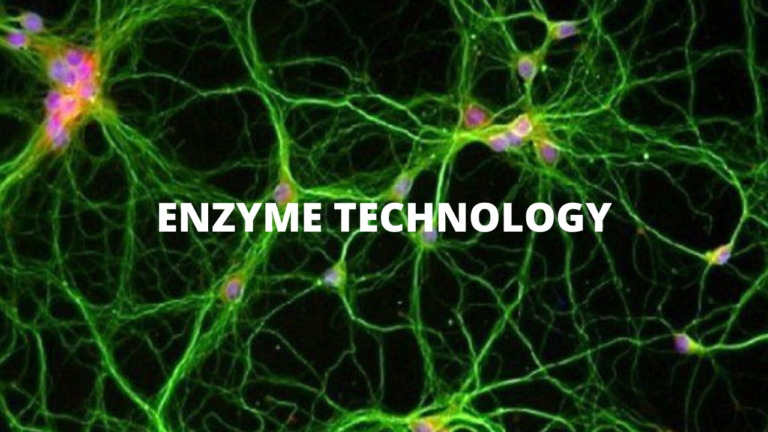Health & Nutrition
NUTRITIONAL GENOMICS
A field of study called nutritional genomics, commonly referred to as nutrigenomics, focuses on the connections between the human genome, diet, and health. People in the discipline strive to comprehend single gene/single food compound interactions as well as systems biology’s ability to explain how the entire body reacts to a food.
The relationship between diet and inherited genes, sometimes known as nutritional genomics or nutrigenomics, was first discussed in 2001.
Nutrigenetics, nutrigenomics, and nutritional epigenetics are just a few of the subcategories that fall under the general phrase “nutritional genomics.” Each of these subcategories explains a particular aspect of how genes respond to dietary factors and express particular phenotypes, such as the chance of developing a disease. There are several uses for nutritional genomics, such as determining the extent to which nutritional therapy and intervention can be utilised to effectively prevent and treat disease.
Nutritional science was first developed as a field that investigated people who lacked specific nutrients and the consequences, such as the disease scurvy, which is brought on by a deficiency in vitamin C. Nutritional science has extended to include these subjects as well as others that are closely related to diet (but not deficiency-associated disorders), such obesity. Nutritional study frequently focuses on preventative measures, attempting to determine which meals or nutrients will increase or decrease risks of diseases and bodily harm.
The relationship between diet and health is well known, but the rise of nutritional genomics has reignited research into which dietary elements are physiologically active and how they exert their effects. The use of high throughput functional genomic technologies in nutrition research is known as nutritional genomics. These technologies can be combined with inter-individual genetic variability databases and databases of genomic sequences to study the process of gene expression for thousands of different genes concurrently. Such methods can make it easier to define the best nutrition for populations, specific groups, and individuals. As a result, the development of functionally improved foods and treatments derived from food should be encouraged.
Functional genomic approaches could make it possible to define the bioactivities of food ingredients because diet has a significant impact on chronic disease and health.
By defining these activities, it will be possible to improve health through innovative foods, dietary fortification, and “nutraceuticals.”
The best way to design nutritional studies and the efficient handling of the enormous datasets produced present challenges.
It is now possible to identify gene variations that change a person’s nutritional needs and predispose them to disease.
By characterising these gene polymorphisms, “at risk” groups will be the focus of dietary counselling and treatment.
What role does nutritional genomics play in achieving these objectives?
Thousands of biologically active chemicals are present in the food we eat, many of which may have significant health advantages.
A number of food-derived substances, including sulphoraphane, curcumin, lycopene, and tea polyphenols, are currently being tested as some of the most effective chemopreventive agents.
We don’t know the whole scope of the physiologically active substances in our food, and we know very little about how they work. A large portion of the information is the result of in vitro experiments using purified substances at levels and in forms to which our bodies’ tissues may never be exposed. While this work serves as a starting point, more physiologically relevant model systems are needed to interpret the full potential of these constituents. These model systems should characterise the extent and rate of absorption, tissue dispersion, and site-specific targeting of metabolically relevant compounds. They should also include extensive studies of time and dose effects. Additionally, nutrition research has traditionally focused on single issues (like lowering the risk of cancer or cardiovascular disease in “at risk” individuals), whereas what we need to address is the question of all the potential effects of particular food components in a genetically heterogeneous population. This is crucial for identifying both planned benefit and unanticipated harm.
The practical foundation of nutritional genomics is a variety of technologies. These are yet mostly untested in nutritional science, but their growing acceptance in fields like pharmacological, toxicological, and clinical research highlights their potential. Similar to these fields, nutritional genomics faces major challenges in the design of studies that make sense for the application of these techniques, the design of studies that can unravel the nuanced interactions between people’s genetic differences, susceptibility to disease, and compound-gene interactions, and the integration and analysis of the enormous data sets that such studies will generate.
Genetic variability
Differences in nutritional needs are mostly determined by inter-individual genetic variation. A single base change within the DNA sequence, known as a single nucleotide polymorphism, is the most frequent type of genetic variation. In the human genome, they happen about once per 1000–2000 nucleotides. “The attribute of existing in multiple diverse forms” is known as polymorphism. It could be brought on by environmental factors, genetic predisposition, or both. In general, this serves as the foundation for the observable variances in all living things and people. Meaningful investigation of inter-individual variation is now not only possible but also crucial for the future of nutrition and clinical research due to the recent creation of comprehensive genetic polymorphism databases and high throughput genetic screening.
There are several genetic polymorphisms that are significant for nutrition .For instance, frequent mutations in the genes that regulate the metabolism of folate have been connected to diseases like cancer, Down’s syndrome, homocystineamia, and problems in the neural tube.
It should be possible to design dietary or pharmacological solutions for “at risk” persons to restore the balance if the processes by which these polymorphisms disrupt folate metabolism and alter illness risk can be clarified. Additionally, polymorphisms in lipid metabolism-related genes have been found to have a crucial role in determining an individual’s plasma low density lipoprotein cholesterol content, which serves as a risk factor for cardiovascular disease.
The potential for directing dietary advice and suggestions at certain subpopulations will grow as more such associations between polymorphisms and illness conditions are documented. But before adopting this strategy, it’s crucial to take into account the logistics and costs of routine genetic testing for many genes, the provision of suitable counselling, public perceptions, and ethical concerns surrounding such testing in relation to, for example, life insurance and family planning.
Additionally, it is very difficult to determine the relative contributions of gene-gene and gene-environment interactions in polygenic diseases (disorders influenced by numerous genes and polymorphisms within them). For instance, twin and sibling studies on osteoporosis reveal that hereditary factors, which typically account for 50–85 percent of the phenotypic variance, are the primary determinants of bone mineral density and structure. Environmental factors make up the remaining percentage. Even so, there is still debate regarding the links between specific gene polymorphisms and changes in bone mineral density. It appears likely that a number of genetic variations, each contributing just a little amount, interact to form the genetic basis for osteoporosis. Candidate gene studies, which look for a link between certain gene polymorphisms and markers of disease risk, are weak in such situations and may produce erroneous results. Uncertainty exists over the ideal approaches for resolving the genetic and environmental causes of such polygenic illnesses.
Guidance on nutrition and dietary changes
The prevention or delay of the onset of disease has the greatest potential for benefit from dietary adjustment in terms of maintaining good health. However, the biomarkers that are now available measure variables that represent too late stages of the illness process (such as subclinical nutritional deficiency or early disease symptoms). The ability to create genetic indicators of early, crucial shifts between health maintenance and disease progression is made possible by nutritional genomics.
Two different strategies have been put up to take advantage of this chance. The first focuses on the disease state and identifies the earliest genes implicated by going back through the mechanism of development. These genes could then be utilised as targets to find dietary components that can control how they are expressed. The second method begins with a healthy state and studies, without bias or anticipation, how dietary elements affect broad patterns of gene expression. The focus would be on specific effects on gene expression patterns in order to look for connections to disease development mechanisms. These strategies need not be antagonistic to one another and may even interact at the level of the important early genes.
CONCLUSION
A personalised, genotype-based approach to nutrition is presented by the Nutrigenomics New Zealand model, which has the ability to offer food items and individualised guidance to improve health at the individual or population level. There is strong evidence that SNPs in specific genes may have a significant impact on how the body reacts to nutrition. Single-gene variations can have minor and erratic influence on a complex disease’s risk or risk factor levels, though. To advance the discipline, more sensitive biological measures will be required, along with techniques for combining data on combinations of pertinent SNPs or CNVs in various genes.
Bioinformatics has many difficulties, particularly when trying to make multidimensional data sets less complex. Only a few clinical trials have used these technologies up to this point, and we haven’t looked into any possible negative impacts of a genotype-derived dietary intervention. Before using genomic techniques to inform food development or dietary advice, there are a number of important challenges that must be resolved.



NUTRITIONAL GENOMICS